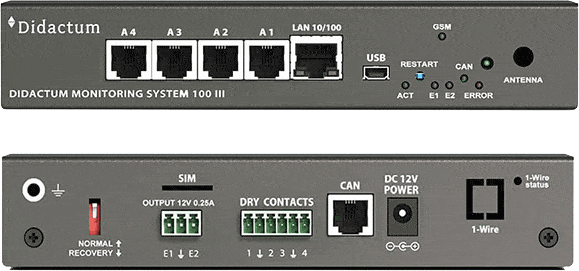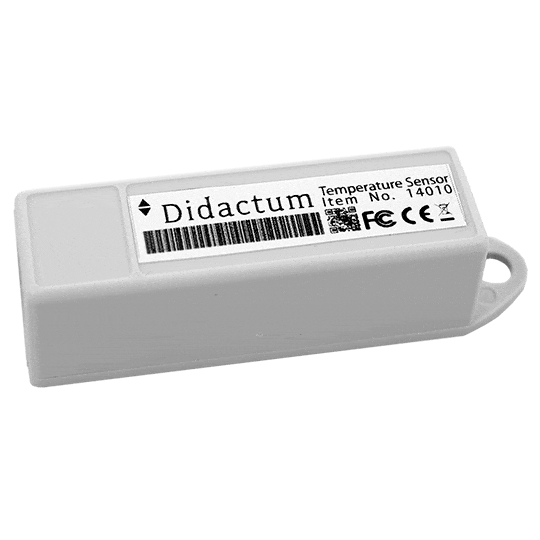Typical Applications for IP Alarm Servers & Intelligent Sensors
Server’s is all of these different types of sensors can be used on the same unit without any other restrictions, hardware or software needed. On to the security monitoring, one type of the security sensors are the magnetic on or off switch type for monitoring doors and windows. For example, when a door or window is accessed the IP Alarm Server detects these signals. Alerts can then be generated and sent to the proper site engineer. Images captured from an attached camera can also provide an instant visual of the security issue in real time.
Another example of the security line of sensors and their applications include the vibration detection sensor which can detect forced entries through walls, ceilings, windows, safes, cabinets and many more. This sensor will initiate an alarm when a vibration from a non-desirable force strikes a protected surface. In combination with the security sensors and cameras this offers added security protection options.
The combination of these sensors has been mentioned several times, so to add an additional example of a typical application regarding security options we need to mention the IR motion detection sensors as well. This sensor combined with the IP Alarm System’s notification feature, cameras, security sensors and vibration detection sensors provide a complete network enabled security monitoring system.
Add the combination siren and strobe sensor which can be triggered by all the other mentioned sensors status and you now also have a powerful audio and visual alerting option.
There are many other examples of these typical applications; however it would be important to mention the power monitoring type sensors and their examples. The first example would be the AC voltage detection sensor which will indicate the presence or absence of AC line voltage. This is useful, for example to indicate when a UPS is running on battery power or when a major AC power source is on or off.
Next would be the AC sensor controlled relay which provides automatic responses to sensor alerts, for example to switch on equipment when a room temperature rises beyond a threshold level or to turn on a security lights when a motion detector is triggered.
Another important example would be the power monitoring sensors, or PMS which provide vital monitoring of real time AC voltages and current levels. This allows monitoring of critical power consumption eliminating the need for manual power audits as well as providing immediate alerts to potential AC power and current problems. Split core CT’s or (current transformers) can also be added for high current monitoring that eliminates the need for disconnecting main power lines during installations.
NMS integration
We mentioned NMS or Network Management systems in the first section “What Are IP Alarm Servers” so we need to expand on these details and explain further how important this feature is. The ease of integrating several key IT management systems plays a very important role when needing to centrally monitor, manage and control small or large infrastructures. Any IT manager out there in the field will tell you he or she needs seamless integration and the ability to easily combine all of their critical systems into one central command and control location.
Again, as mentioned earlier, the IP Alarm Systems are fully SNMP compliant providing MIB files so combining existing or new NMS is performed easily and quickly. This allows for effective cost savings by reducing labor time as just one example.
The IP Alarm Server and the intelligent sensors can be easily integrated in all SNMP NMS tools and environments such as OpenNMS, Nagios and many others without any issues.
Remote site monitoring – why it is needed
The IP Alarm Server and sensors play a very important roll due to the ever increasing demand for the monitoring and alerting systems required for remote sites. This fact is extensively proven due to the IP Alarm Server’s ability to be installed in most any location then function independently and reliably on its own.
The reasons why they are needed is all of these sites are unmanned meaning there are no security or technical personnel ever present at these remote locations. These sites have many systems that require monitoring that include the communication equipment, backup generators, environmental conditions, and operational status so therefore this is a huge and costly problem if there are no monitoring, alerting, or remote access control systems in place.
Normally all of these sites are in very remote locations so they are difficult, time consuming and most importantly very costly for support personnel to travel to when there are problems. When support personnel are dispatched to these locations there is no way to know if the technician was in fact the person who accessed the site or any record of when and how long they were on site.
These remote sites can also be targets for theft. From fuel tanks to power generators and other high value equipment that can quickly become stolen. This is especially true in third world countries where thieves will target these remote sites without any security systems in place by stealing fuel, striping the copper cabling and other equipment they can then get money for. Therefore the site operators have no way to know who accessed the remote sites or when the theft took place.
By not having any type of live, real time status of the remote site monitoring, alerting or remote control of the equipment, these sites are extremely susceptible to not only equipment failures, but also damage due to environmental conditions. There is also no possibility to simply reboot or reset the equipment remotely. There is also no possible way to know the status of backup generators. Most critical information that would be lacking is when the backup generators are started due to power loss, how long are the generators running and most critically how much fuel is present.
Again, this is especially true in third world countries where these remote sites are spread out over a very wide area throughout a country. As mentioned before the labor costs involve travel to remote sites which can also be extremely costly. Having installed IP Alarm Systems, sensors and access control in remote sites allows the system engineers to remotely manage, maintain and resolve issues without having to travel to each site.




